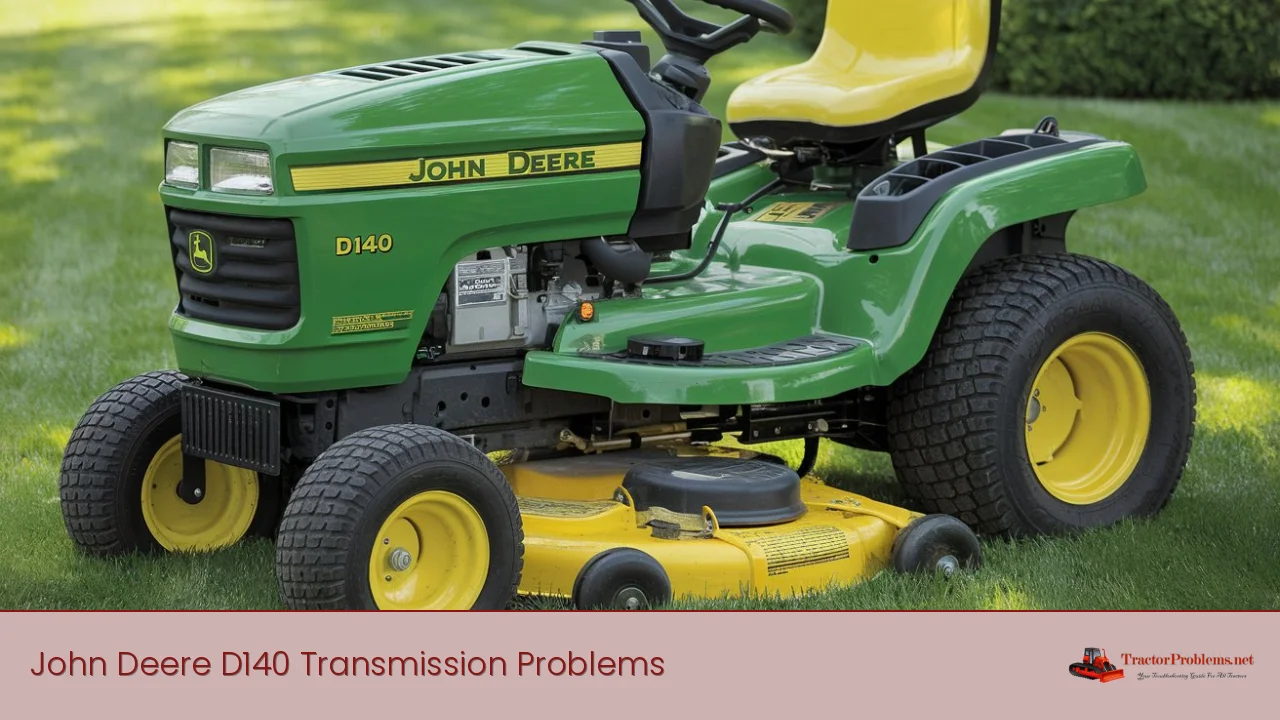John Deere D140 Transmissions are renowned for their durability and power; however, they can sometimes encounter problems that need to be solved. With the help of experienced mechanics, these issues can be quickly identified and resolved. With the right tips and advice, you can easily troubleshoot and repair common John Deere D140 transmission problems.
Troubleshooting and Fixing Common John Deere D140 Transmission Problems
John Deere D140 transmissions are renowned for their dependability and performance, but even these machines can experience difficulties that need to be addressed. Experienced mechanics can easily identify and resolve these problems, but with the right advice, you can also troubleshoot and repair common transmission issues on your own. In this article, we’ll provide you with tips and tricks to help you identify and fix John Deere D140 transmission problems quickly and efficiently.
| Problem | Solution |
|---|---|
| Lack of Power | Check the air filter, fuel filter, and spark plugs. Make sure the engine has enough oil and is properly lubricated. |
| Odd Noises | Check the transmission fluid levels and condition. Look for any worn-out or damaged parts that need to be replaced. |
| Slipping Gears | Check the transmission fluid levels and condition. Make sure the transmission is properly lubricated and the shift linkage is adjusted properly. |
| Stalling | Check the air filter, fuel filter, and spark plugs. Make sure the transmission is properly lubricated and the clutch is adjusted properly. |
Noise
John Deere D140 Transmissions are known for their robust construction, but they can sometimes produce strange noises that can be a sign of a problem. John Deere D140 Transmission Problems can manifest themselves in the form of strange noises coming from the transmission. This could be due to worn gears, a broken bearing, or a loose transmission. If the noise persists, it should be addressed as soon as possible to prevent further damage.
Leaking Fluid
Another common John Deere D140 Transmission Problem is leaking fluid. This could be due to a cracked or worn gasket, a damaged seal, or a loose connection. A leaking fluid indicates a severe problem with the John Deere D140 Transmission. This should be addressed as soon as possible to prevent further damage.
Slipping Gears
Slipping gears can also be a sign of a problem with the John Deere D140 Transmission. This is usually caused by worn or damaged components, such as the clutch, input shaft, or synchronizer. If the gears are slipping, it is important to identify the cause of the problem and address it as soon as possible. This can help prevent further damage and ensure the transmission functions properly.
Key Takeaways for Troubleshooting and Fixing John Deere D140 Transmission Problems
- Check the air filter, fuel filter, and spark plugs for any issues.
- Check the transmission fluid levels and condition for any signs of wear or damage.
- Look for any broken or worn-out parts that need to be replaced.
- Make sure the transmission is properly lubricated and the shift linkage is adjusted properly.
- Listen for any strange noises coming from the transmission that could be a sign of a problem.
- Check for any leaking fluid that could be a sign of a damaged gasket, seal, or connection.
- Check the clutch, input shaft, and synchronizer for any signs of wear or damage.
Ensuring Proper Functionality of the John Deere D140 Transmission
Troubleshooting and fixing John Deere D140 Transmission problems is essential for ensuring the transmission functions properly. Proper maintenance is key to avoiding any major issues and can help to prolong the life of the transmission. The key takeaways for troubleshooting and fixing John Deere D140 Transmission Problems include checking the air filter, fuel filter, and spark plugs for any issues, checking the fluid levels and condition, looking for any broken or worn-out parts, making sure the transmission is properly lubricated, listening for strange noises, and checking for any leaking fluid. By following the above steps, owners of John Deere D140 Transmissions can ensure their transmission functions properly for years to come.
